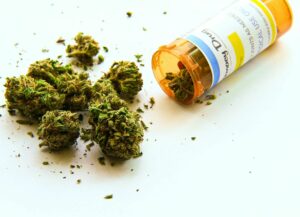40 Year Study on Marijuana & Alcohol
Rice University’s Baker Institute for Public Policy recently released a 40 year study that showed a wide range of data on drug and alcohol usage. The study was made up of government data that was collected starting in 1975, which was then compiled with the help of Brian C. Bennett.
Bennett, a former career analyst and now on the faculty of the University of Virginia, transferred information from yearly surveys into concise charts that allowed for easy data analysis. The data came from The National Survey on Drug Use and Health, which involved the annual interviews of 70,000 people ages twelve years and older. 50,000 teens were also interviewed with annual follow ups to monitor use in that group more closely.
Rates of Cannabis Use
The study found that in between the years of 1979 and 2014, the number of people twelve years old and older who used marijuana in a lifetime rose from 28% to 44.2%. The number of people who used marijuana in the last year, however, decreased from 16% to 13.2%, as did the number of people who had used marijuana in the last month, which decreased from 13% to 8.4%. These numbers show low levels of frequent use of marijuana, as well as a general decrease in semi-consistent marijuana usage. Though marijuana was tried more often by people, they used it less often on average than people did in 1979.
Rates of Alcohol Use
The rates of alcohol use in those twelve years old and older has decreased slightly in all three categories between the years of 1979 and 2014, but overall usage of alcohol is much higher than that of marijuana. The number of people who had used alcohol in their lifetime went from 89% to 82.1% between 1979 and 2014, the number of people who used alcohol in the last year went down from 72% to 66.6%, and the number of people who used alcohol in the last month went from 63% to 52.7%.
Higher Rate of Alcohol Usage
The difference between these two accounts shows an undeniably higher use of alcohol than marijuana. The rate of monthly alcohol use is almost six times higher than that of monthly marijuana usage. The study also found that illegal substances, a category that marijuana is considered to be a part of in this study, made up less than 20% of substance abuse disorders, where alcohol made up the rest.
Across all of the years of the study alcohol is the most overwhelmingly used and abused substance. Over 10,000 people died from alcohol related issues in the last year, compared to zero deaths related to cannabis usage.
Marijuana is NOT the Gateway Drug
The director of the Baker Institute for Public Policy, William Martin, said that, “Marijuana’s reputation as a ‘gateway’ drug is not supported, even for more marijuana use. More than half of respondents under 60 have used it during their lifetime, but fewer than 10 percent use it regularly.” This study is just one of the many that have disproved the idea of the “gateway” theory.
A study released in January of this year in the Journal of School Health showed that alcohol was overwhelmingly the first drug used by teens, between alcohol, marijuana, and tobacco. The study, which was conducted by Texas A&M and the University of Florida, used data from the Monitoring the Future survey. The survey interviewed 2,800 12th graders from across the country and 54% of them used alcohol before any other drug, compared to only 10% who used marijuana first. The study also found that the earlier teens used alcohol, the more likely they were to try other drugs and use them more frequently.
Alcohol IS the Gateway Drug
A 2008 study out of the American School Health Association also looked at the Monitoring the Future data and ranked it on the Guttman Scale, which is a way to order survey responses to create a binary outcome. The study conclusion claimed that, “results from the Guttman Scale indicated that alcohol represented the ‘gateway’ drug, leading to the use of tobacco, marijuana, and other illicit substances.” The study also stressed the importance of school drug education resources being focused on alcohol, rather than being spread equally across all drugs.
Cannabis Use Remains Stable
The Issue Brief released by the Baker Institute, associated with the publication of the Rice University study, noted that while marijuana is still the most widely used “illegal” drug, there have been no major spikes in the states of Colorado and Washington where cannabis has been legalized. Though more people have used marijuana in their lifetime, the percentage of people who use marijuana consistently is much lower than those who have used it overall, and is much lower than those who use alcohol consistently.
This lines up with the words of Colorado Governor John Hickenlooper who said, “It seems like the people that were smoking before are mainly the people that are smoking now.” Marijuana usages have not seen the major increase that people against the legalization of cannabis predicted they would see with legalization.
Alcohol Associated with More Substance Abuse
The Baker Institute study still counts cannabis as an illegal product and does not differentiate between medical and recreational use. This study, in the association with many others, definitively dismisses the idea that marijuana could be considered a gateway drug. By the numbers alone, alcohol use dramatically higher than cannabis use and the majority of teens try alcohol before any other drug.
All of this data shows that if any drug is a gateway to other drug usage, it is alcohol. It is important to note that this study does show an interesting trend of decreased use of both cannabis and alcohol, but alcohol usage is still very high and is associated with high levels of substance abuse.
Do you have questions about about cannabis? Ask a question on [HelloMD’s new Answers](https://www.hellomd.dev/ feature). A doctor or member of our community will answer.
If you are new to cannabis and want to learn more, take a look at our Cannabis 101 post. HelloMD can help you get your medical marijuana recommendation; it’s 100% online, private and efficient.






